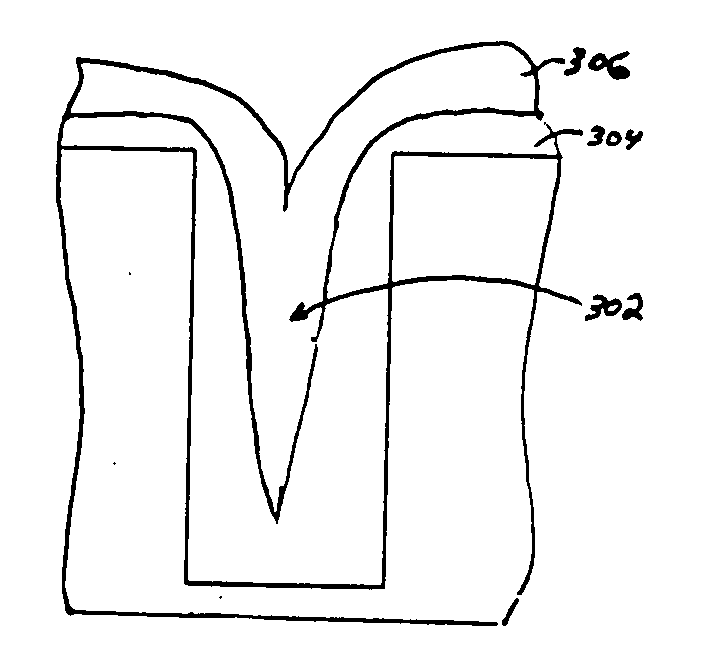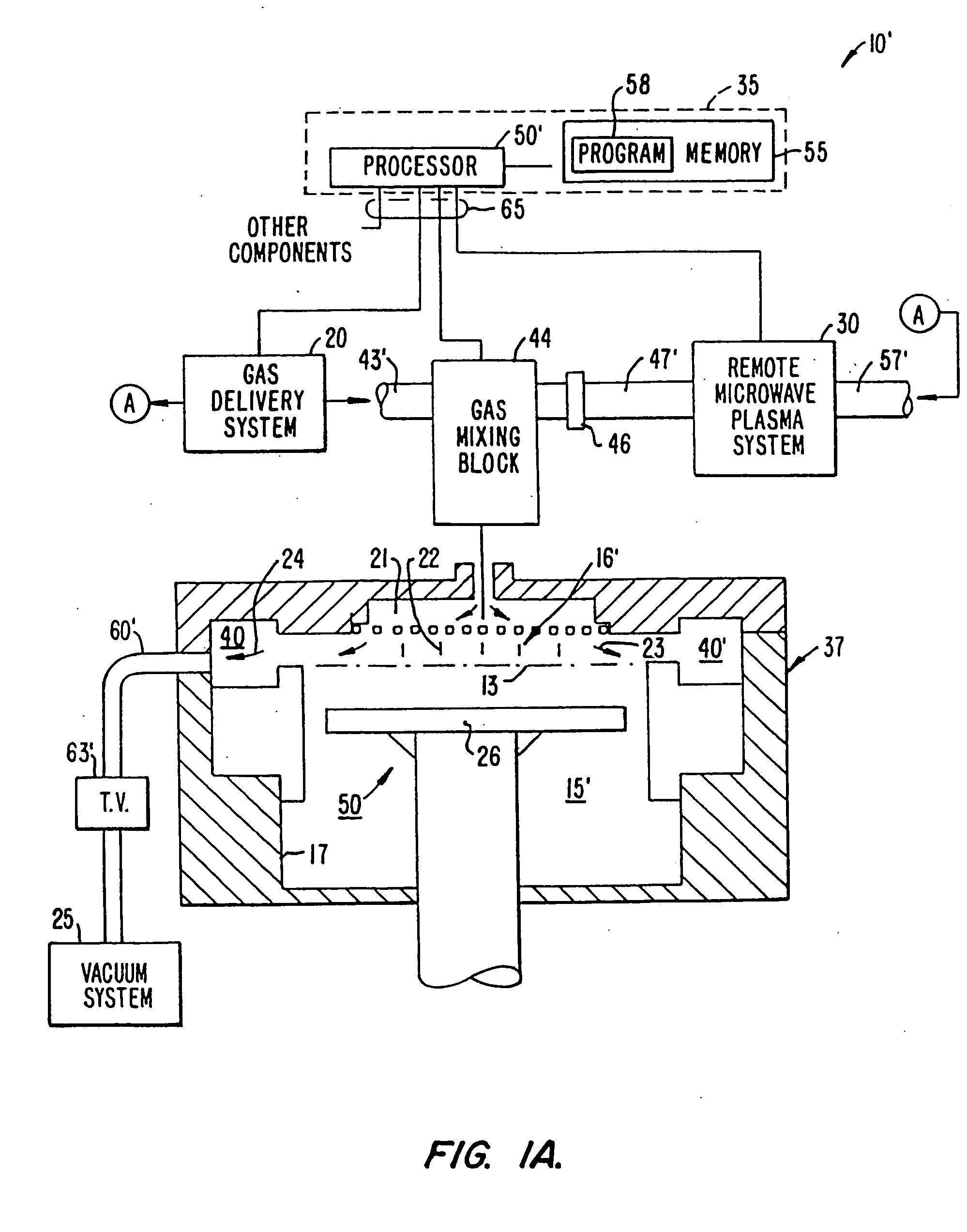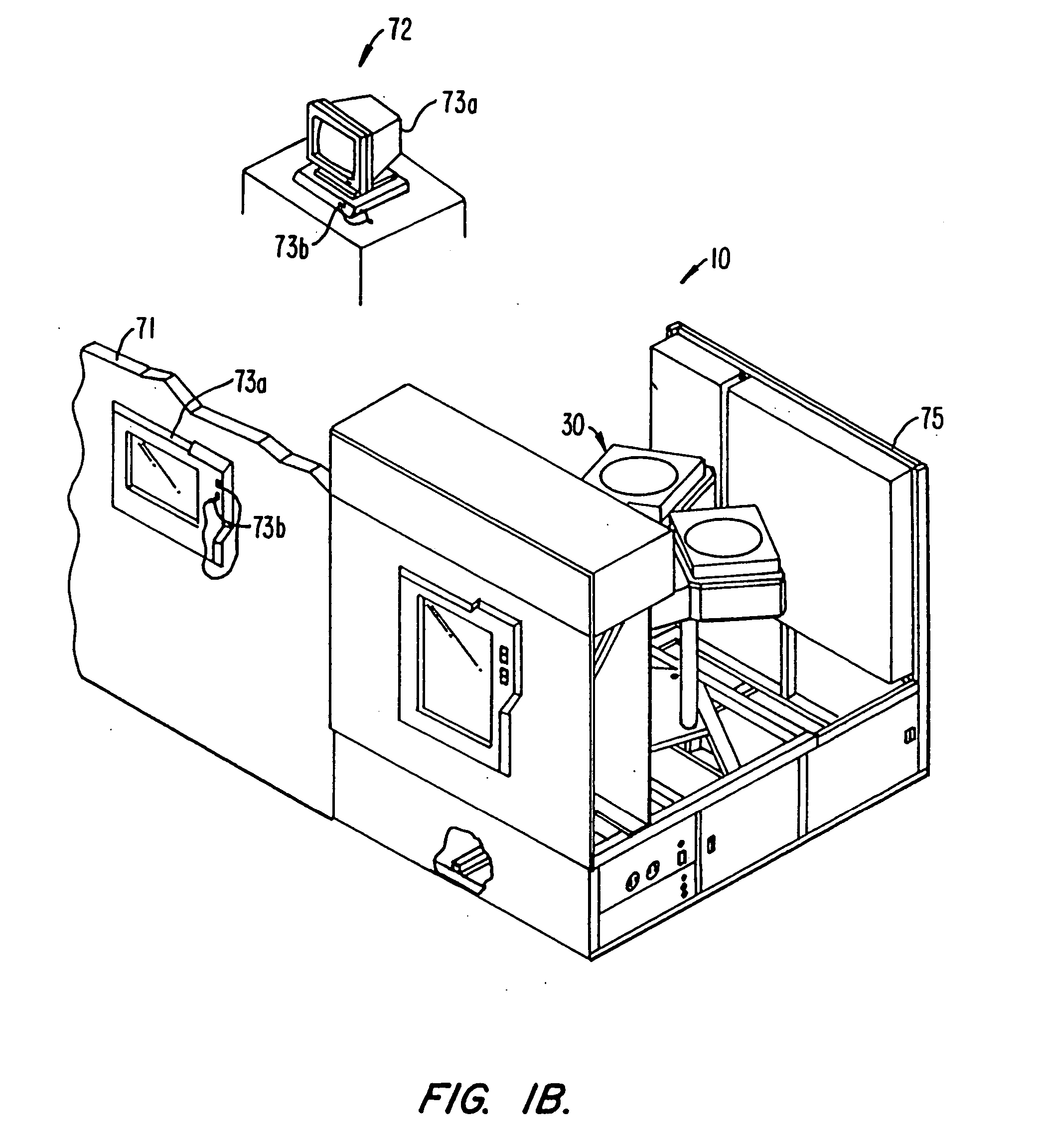Gap-fill techniques
a gap-filling and dielectric material technology, applied in the field of gap-filling techniques, can solve the problems of increasing the risk of damage to devices fabricated on the substrate, too high aspect ratio, and inability to completely fill, etc., to achieve the effect of improving the gap-filling performance of a dielectric material and plasma-enhanced chemical vapor deposition
- Summary
- Abstract
- Description
- Claims
- Application Information
AI Technical Summary
Benefits of technology
Problems solved by technology
Method used
Image
Examples
Embodiment Construction
[0021] A variety of techniques may be employed, separately or in combination, to improve the gap-filling performance of a dielectric material formed by chemical vapor deposition (CVD). In one approach, a first dielectric layer is deposited using sub-atmospheric chemical vapor deposition (SACVD), followed by deposition of a second dielectric layer by plasma-assisted deposition such as HDP-CVD or PECVD. In another approach, a dielectric layer is deposited using SACVD in the presence of reactive ionic species from a remotely generated plasma, which acts to perform etching during the deposition process. In still another approach, high aspect trenches may be filled utilizing SACVD in combination with high temperature deposition of oxide layers.
I. Gap Fill Techniques
[0022] As device geometries shrink, void-free filling of high aspect ratio spaces becomes increasingly difficult due to limitations of existing deposition processes. High density plasma CVD of silicon dioxide is conventiona...
PUM
| Property | Measurement | Unit |
|---|---|---|
| temperature | aaaaa | aaaaa |
| feature sizes | aaaaa | aaaaa |
| pressures | aaaaa | aaaaa |
Abstract
Description
Claims
Application Information
 Login to View More
Login to View More - R&D
- Intellectual Property
- Life Sciences
- Materials
- Tech Scout
- Unparalleled Data Quality
- Higher Quality Content
- 60% Fewer Hallucinations
Browse by: Latest US Patents, China's latest patents, Technical Efficacy Thesaurus, Application Domain, Technology Topic, Popular Technical Reports.
© 2025 PatSnap. All rights reserved.Legal|Privacy policy|Modern Slavery Act Transparency Statement|Sitemap|About US| Contact US: help@patsnap.com



